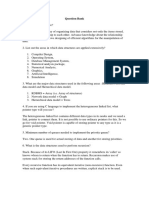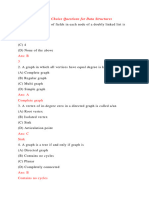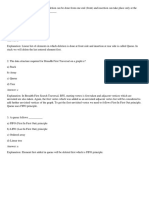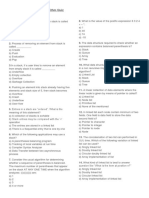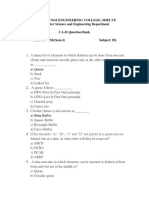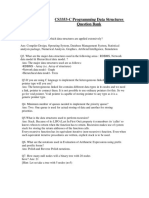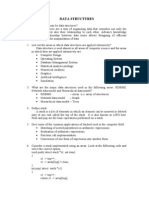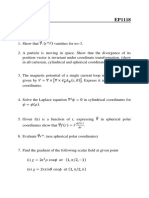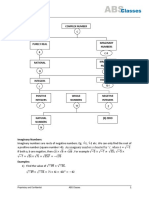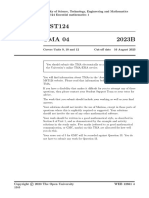0% found this document useful (0 votes)
8 views11 pagesCHP Dbatu RNDL MCQ
The document consists of multiple chapters covering fundamental concepts in data structures and algorithms, including Abstract Data Types (ADT), arrays, sparse matrices, linear and non-linear structures, hashing, stacks, queues, linked lists, binary trees, and sorting algorithms. It includes multiple-choice questions and answers that test knowledge on these topics. Each chapter focuses on specific data structures, their properties, operations, and applications.
Uploaded by
santoshbhokare871Copyright
© © All Rights Reserved
We take content rights seriously. If you suspect this is your content, claim it here.
Available Formats
Download as PDF, TXT or read online on Scribd
0% found this document useful (0 votes)
8 views11 pagesCHP Dbatu RNDL MCQ
The document consists of multiple chapters covering fundamental concepts in data structures and algorithms, including Abstract Data Types (ADT), arrays, sparse matrices, linear and non-linear structures, hashing, stacks, queues, linked lists, binary trees, and sorting algorithms. It includes multiple-choice questions and answers that test knowledge on these topics. Each chapter focuses on specific data structures, their properties, operations, and applications.
Uploaded by
santoshbhokare871Copyright
© © All Rights Reserved
We take content rights seriously. If you suspect this is your content, claim it here.
Available Formats
Download as PDF, TXT or read online on Scribd
/ 11






